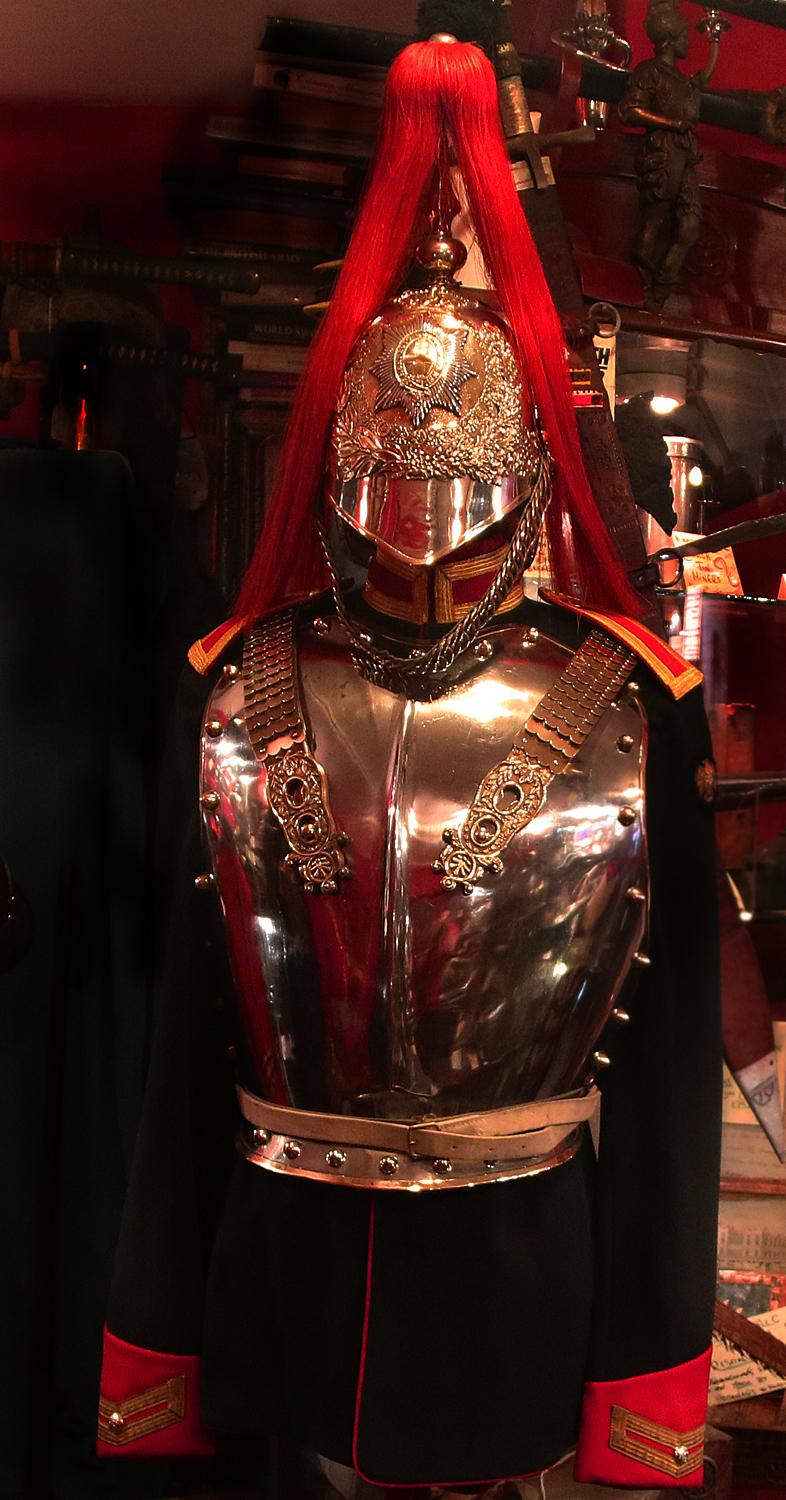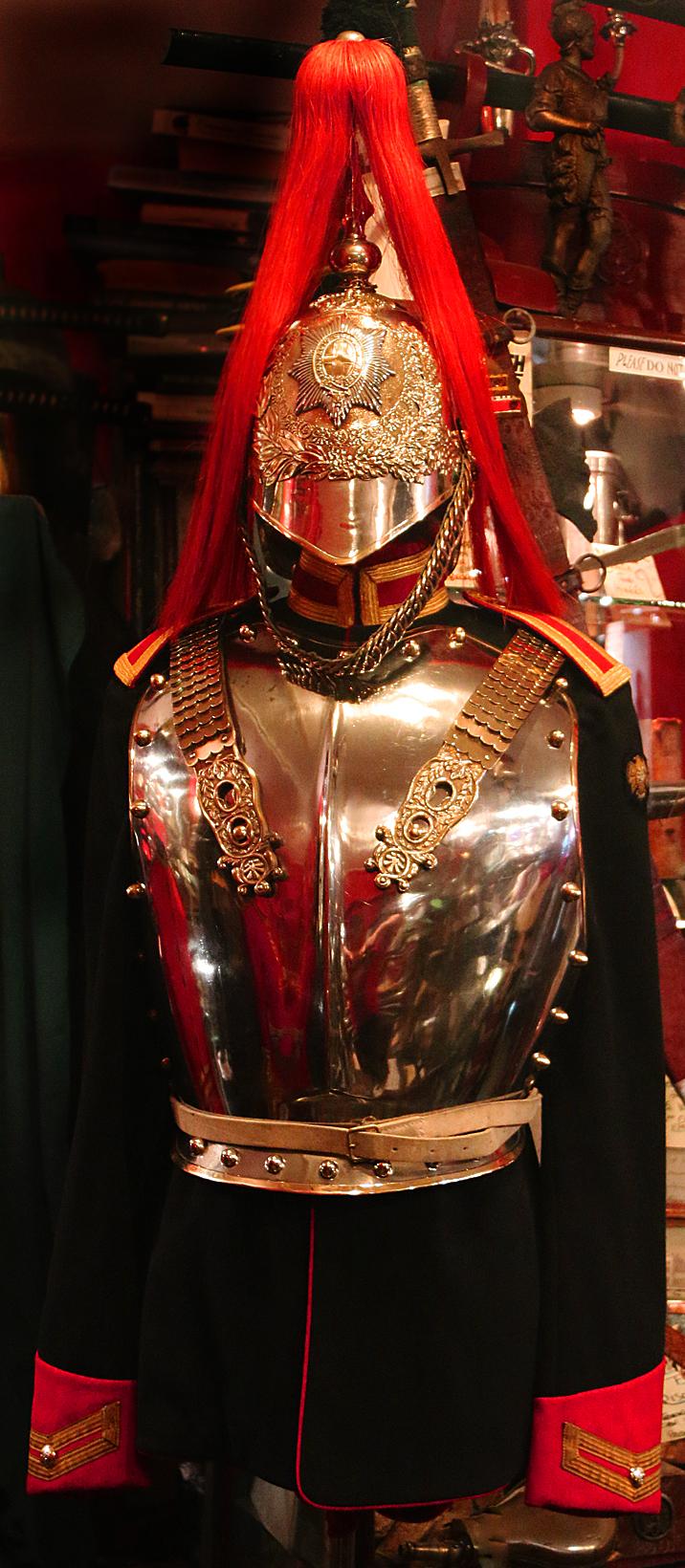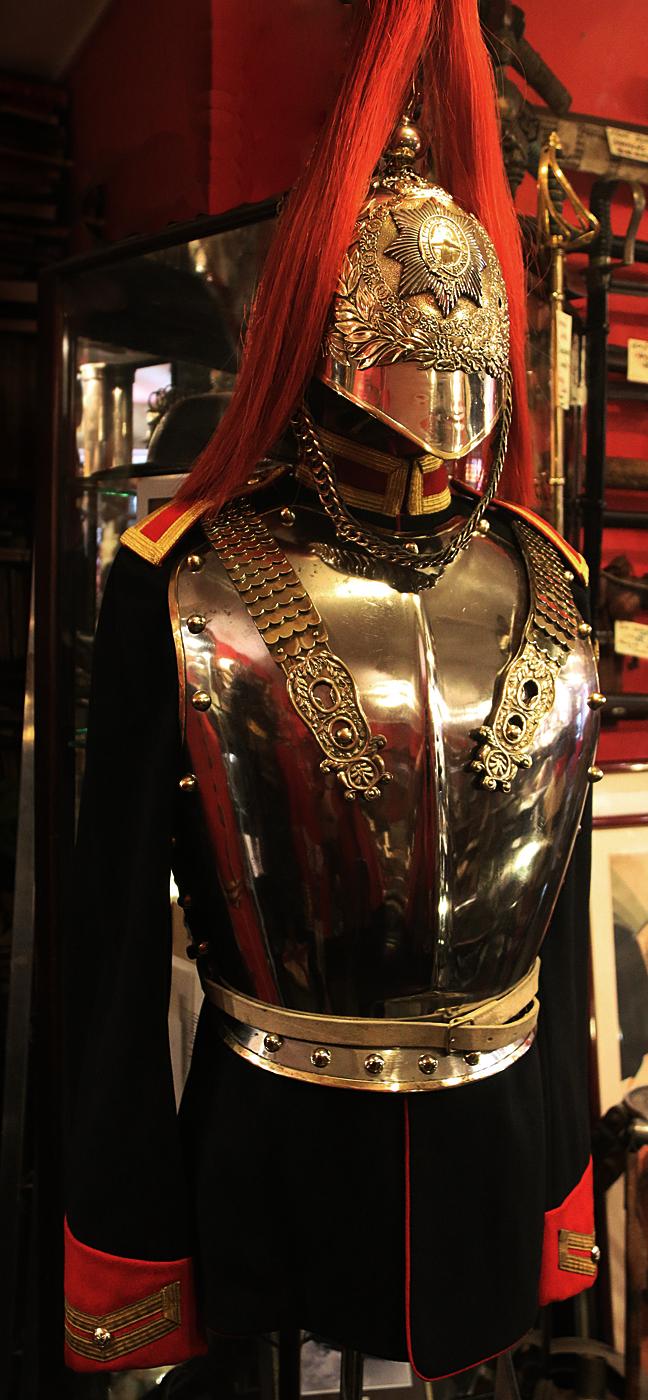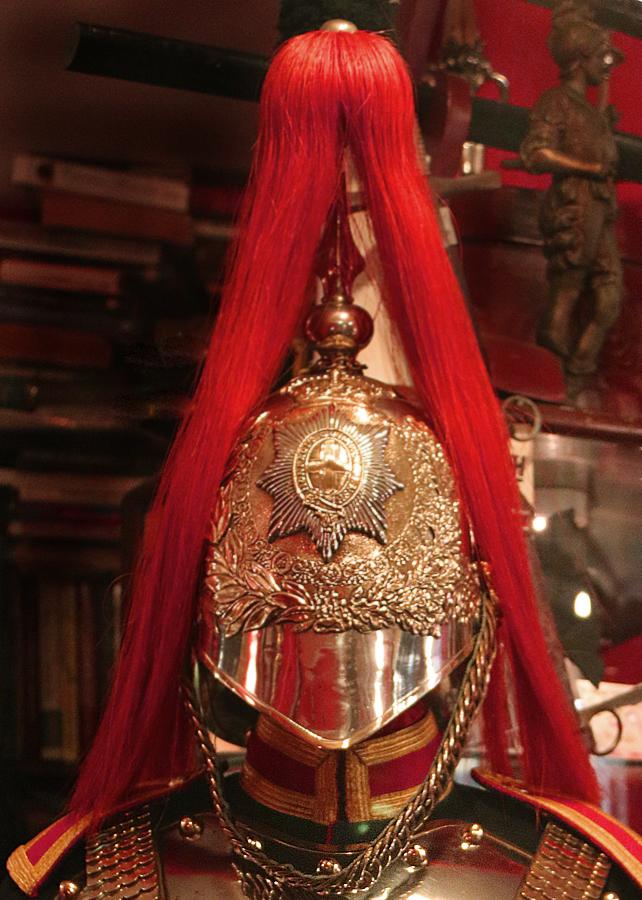Vintage, Household Cavalry Dress Uniform. A Wonderful Helmet, Cuirass Armour, Tunic, White Leather Panteloons, Jack Boots with Spurs, Buff Hide & Cotton Riding Gauntlets Of The Royal Mounted Bodyguard of Her Well Beloved Late Majesty Queen Elizabeth IInd
Post 1953 period. The full dress uniform helmet and armour of the Blues and Royals
The Household Cavalry are the only British regiments dressed as cuirassiers and has worn them since the coronation of William IV in 1830. The cuirass consists of a front and back polished steel plate shaped to fit the body. It had brass edges and studs on the sides and was secured on the shoulders by two gilt scales of regimental pattern. At the waist it is secured by a thin buff hide leather belt. The cuirass is lined with leather, The cuirass is only worn in mounted review order with the white leather panteloons and jack boots.
This unit is one of the two Household Cavalry regiments in the British Army, the other being The Life Guards. It was formed in 1969 by amalgamating The Royal Horse Guards with The Royal Dragoons (1st Dragoons), both of which had origins dating back to the mid-17th century.
19th century
In 1809, the unit moved to the Peninsular War (1808-14), helping to cover Wellington's retreat to Torres Vedras (1810) and charging at Fuentes de Onoro the following year. It also fought at Ciudad Rodrigo (1812), Badajoz (1812), Alba de Tormes (1813), Vitoria (1813) and Pamplona (1813).
In 1815, it fought at Waterloo with the Union Brigade. It captured the eagle of the French 105th Line Infantry Regiment there before being counter-attacked by French lancers.
A long period of home service followed until the Crimean War (1854-56), where the regiment charged with the Heavy Brigade at Balaklava in 1854.
The next three decades were spent on garrison duties in England, Ireland and Scotland. During this period, in 1877, the regiment was re-named the 1st (Royal) Dragoons. Then, in 1884, it sent a detachment to the Sudan that fought at Abu Klea (1885).
In 1899, it sailed to South Africa to fight in the Boer War (1899-1902), where it was immediately employed in the relief of Ladysmith.
The regiment deployed to the Western Front in 1914 and spent the entire First World War (1914-18) there with 3rd Cavalry Division. It fought in many battles including the First Battle of Ypres (1914), Second Battle of Ypres (1915), Loos (1915), Arras (1917) and Amiens (1918).
It was stationed in England, India, Palestine and Egypt during the inter-war period.
Shortly after the outbreak of the Second World War (1939-45), it became a mechanised unit, joining the Royal Armoured Corps in 1940. It served as an armoured reconnaissance regiment in Syria (1941) and North Africa, where it fought in the Gazala battles and at El Alamein in 1942. It then took part in the Sicily and Italian campaigns in 1943.
The regiment landed in Normandy in July 1944 and ended the war as part of the force which liberated Copenhagen in May 1945.
Although famous for its ceremonial duties, the new unit saw much active service during the 1970s and 1980s as a reconnaissance unit in West Germany with the British Army of the Rhine. Squadrons from the regiment also carried out several tours of Northern Ireland and served on Cyprus with United Nations forces.
In 1982, it sent detachments to the Falklands War, where they supported The Parachute Regiment in the Battle of Wireless Ridge.
Code: 24993
5450.00 GBP




